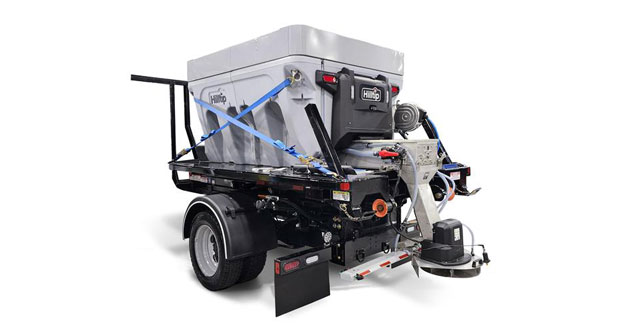By: Phil Harwood
Successfully managing a snow operation is almost a year-round process. Even though spring is upon us, we cannot forget about the snow season until we wrap up the previous winter season. While there are many obvious wrap-up procedures, such as cleaning equipment, let’s focus on the critical procedures often overlooked or neglected.
1 Host a recap meeting. The most important internal wrap-up procedure is to convene a snow recap meeting with key team members, including operations management, account managers, key administrative staff and select field team members. The purpose of this meeting is to identify all concerns and areas of success. These are the areas of opportunity for the next snow season.
Any action taken that solves problems or reinforces successful aspects of your snow and ice program will improve its overall successfulness. This meeting should be held while the season is still fresh in everyone’s mind so that important details are not forgotten.
This pow-wow needs to result in specific action items, accountabilities and deadlines. It also should be conducted in a manner that is conducive to generating honest, candid discussion, including complaints, ideas and suggestions.
2 Recognize your workers. Like any service business, the quality of people determines the level of a snow removal business’ success. However, it is an all-too-common practice to give more attention to snow and ice management equipment, processes and contracts than to our employees.
It is absolutely essential to evaluate the individual performance of team members, provide detailed feedback and reward high achievers. A banquet at the end of each snow season is an ideal forum for recognition, rewards and thanking all team members for their hard work.
Furthermore, it is helpful to identify any gaps with recruiting, hiring, assignments, training and managing our people.
3 Review snow contracts. Revisions often are required to more effectively minimize risks, clarify expectations, comply with legalities, etc. Both sales contracts and subcontract agreements should be critiqued in detail at this time.
The urgency of this procedure is because legal advisors might need to be consulted, and there might be several iterations of changes before they are finalized. Because this can be a fairly slow process, getting an early jump helps ensure these documents are ready to go for the next season.
4 Revise estimating and pricing models. While these models should not be dramatically altered simply because of one odd winter, slight adjustments might be necessary to maintain accurate estimating and pricing systems.
In many areas of the country, extreme weather conditions and shortages of materials drove up costs. New assumptions will need to be made about how these factors impact estimating and pricing models for the upcoming season.
5 Identify equipment needs. Some types of snow equipment, especially large and specialized machinery, have significant lead times required for planning, research, decision-making, financing, ordering and outfitting.
Also, if decommissioned equipment is going to be sold, there is no reason to delay turning it into cash and getting it off the books.
6 Do a marketing critique. An analysis of what worked in your marketing program and what didn’t is an essential step. This review should include both quantitative and qualitative metrics. If quantitative metrics are not available, this presents a huge opportunity in itself: All marketing initiatives can be measured to some degree with effective planning and execution. Without data, you might be wasting money.
Successful marketing initiatives must be evaluated before blindly repeating them. A promotional event, for example, might not be successful two years in a row without dramatically remaking it to keep it fresh and relevant. A successful mail campaign, however, might be a winner that deserves to be fully funded or even expanded in the future.
Marketing materials take time to plan, create, print, etc. The earlier we get a jump on this area, the better. August will be here before we know it.
7 Talk with customers. Whether an individual or a company, every customer requires our attention — even at the end of the season. Too many snow contractors disappear after the last snowfall, lie dormant all summer, and then resurface in the fall. Instead of hibernating all summer, remain engaged and visible to customers.
One often-overlooked procedure — and a great way to remain visible — is to conduct post-season site inspections. The May issue of Snow Business magazine (www.snowbusiness.net), Landscape Management‘s sister publication, contains a comprehensive review of this important procedure.
It might be neither possible nor worthwhile to inspect every site and meet with each customer, but there are certainly some accounts that deserve this level of attention.
8 Touch base with subcontractors and vendors. These constituents have a significant impact on our operations. By ensuring all loose ends are tied up at the end of the season, your relationships with these key players remain strong and you can limit surprises in the fall.
A quick phone call or cup of coffee with an important subcontractor or vendor goes a long way.
Putting the snow season to bed is not as simple as putting the snow and ice equipment and supplies away. There are important, if not critical, procedures that should be incorporated into our snow operations now to enhance our success for seasons to come.
— The author is owner of Pro-Motion Marketing LLC and has more than 20 years of management experience in the Green Industry. Contact him at www.pro-motionmarketingllc.com.

